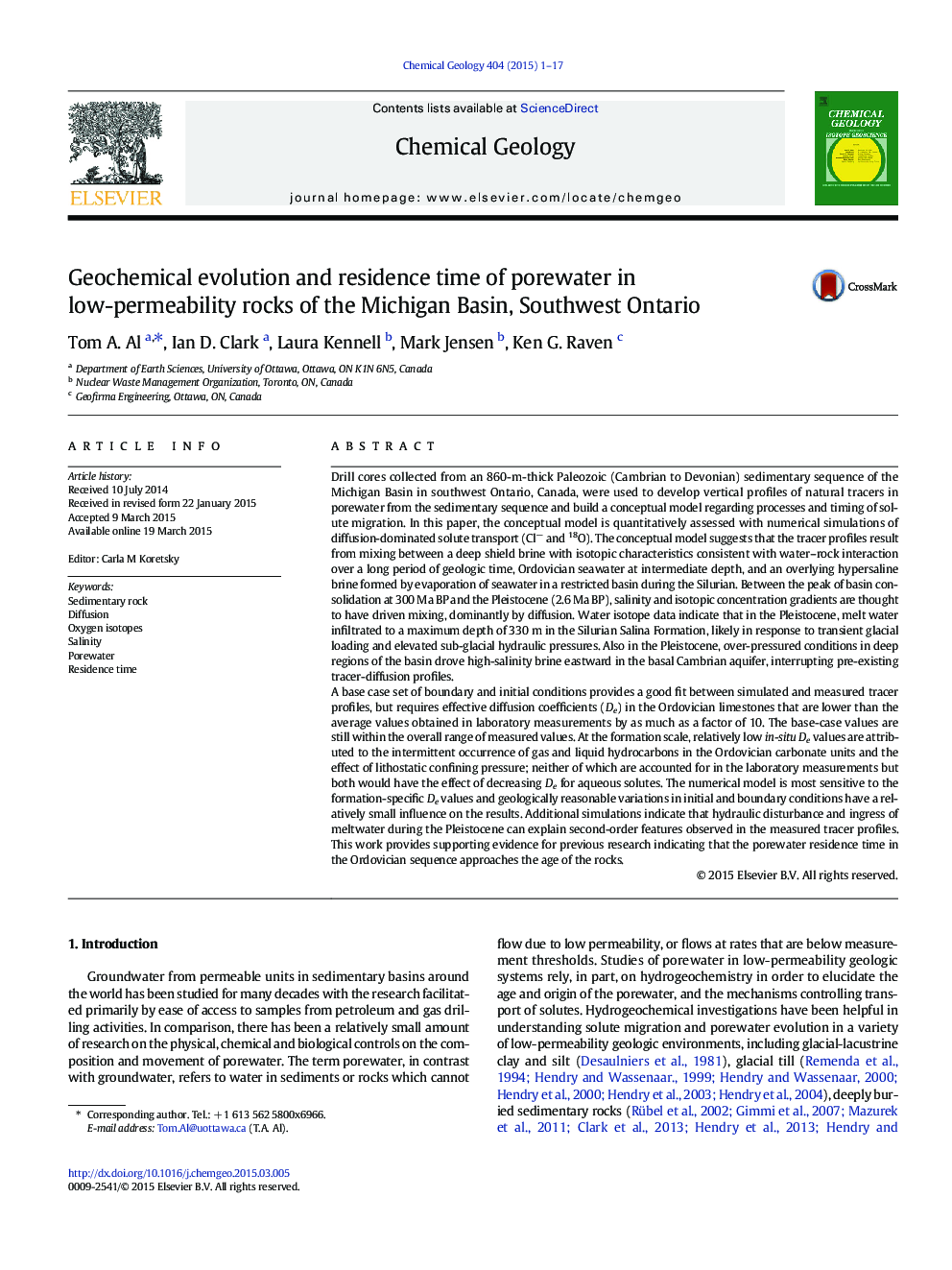| کد مقاله | کد نشریه | سال انتشار | مقاله انگلیسی | نسخه تمام متن |
|---|---|---|---|---|
| 4698503 | 1637569 | 2015 | 17 صفحه PDF | دانلود رایگان |
• Geologic, geochemical and hydrologic data, and numerical simulations are used to infer porewater residence time.
• Groundwater in aquifers is affected by advection, dispersion and mixing processes that obscure primary signatures.
• We focus on porewater in low-permeability units.
• The data suggest that Paleozoic porewater is retained in Ordovician shale and limestone.
Drill cores collected from an 860-m-thick Paleozoic (Cambrian to Devonian) sedimentary sequence of the Michigan Basin in southwest Ontario, Canada, were used to develop vertical profiles of natural tracers in porewater from the sedimentary sequence and build a conceptual model regarding processes and timing of solute migration. In this paper, the conceptual model is quantitatively assessed with numerical simulations of diffusion-dominated solute transport (Cl− and 18O). The conceptual model suggests that the tracer profiles result from mixing between a deep shield brine with isotopic characteristics consistent with water–rock interaction over a long period of geologic time, Ordovician seawater at intermediate depth, and an overlying hypersaline brine formed by evaporation of seawater in a restricted basin during the Silurian. Between the peak of basin consolidation at 300 Ma BP and the Pleistocene (2.6 Ma BP), salinity and isotopic concentration gradients are thought to have driven mixing, dominantly by diffusion. Water isotope data indicate that in the Pleistocene, melt water infiltrated to a maximum depth of 330 m in the Silurian Salina Formation, likely in response to transient glacial loading and elevated sub-glacial hydraulic pressures. Also in the Pleistocene, over-pressured conditions in deep regions of the basin drove high-salinity brine eastward in the basal Cambrian aquifer, interrupting pre-existing tracer-diffusion profiles.A base case set of boundary and initial conditions provides a good fit between simulated and measured tracer profiles, but requires effective diffusion coefficients (De) in the Ordovician limestones that are lower than the average values obtained in laboratory measurements by as much as a factor of 10. The base-case values are still within the overall range of measured values. At the formation scale, relatively low in-situ De values are attributed to the intermittent occurrence of gas and liquid hydrocarbons in the Ordovician carbonate units and the effect of lithostatic confining pressure; neither of which are accounted for in the laboratory measurements but both would have the effect of decreasing De for aqueous solutes. The numerical model is most sensitive to the formation-specific De values and geologically reasonable variations in initial and boundary conditions have a relatively small influence on the results. Additional simulations indicate that hydraulic disturbance and ingress of meltwater during the Pleistocene can explain second-order features observed in the measured tracer profiles. This work provides supporting evidence for previous research indicating that the porewater residence time in the Ordovician sequence approaches the age of the rocks.
Journal: Chemical Geology - Volume 404, 26 May 2015, Pages 1–17
